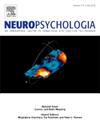In the Flanker response congruency task, motor evoked potential amplitude increases in the chosen hand prior to response, but does not change in the unchosen hand
IF 2
3区 心理学
Q3 BEHAVIORAL SCIENCES
引用次数: 0
Abstract
The coloured Flanker task examines preparatory motor processes, providing insights into stimulus-interference (distracting stimuli requiring the same response) and response-interference (distracting stimuli triggering competing responses). Continuous measurement of the responses – using dynamometers and electromyography (EMG) – provides information about ongoing motor processes in both hands simultaneously, from stimulus onset until response production. The present study investigated the representations of chosen and unchosen hand responses using dual simultaneous transcranial magnetic stimulation (TMS) over left and right primary motor cortices (M1), evoking EMG activity in first dorsal interosseous and thenar muscles. We hypothesised to find decreased activation of the unchosen hand (associated with the flankers) and increased activation of the chosen hand (associated with the target), starting about 150 ms before the manual reaction time. Fifteen adults performed the coloured Flanker task. We delivered, simultaneously, two single-pulses of TMS, one over left and one over right M1 within a time window from target presentation to the mean RT in the prior block. In the chosen hand, motor evoked potential (MEP) amplitudes started increasing 156 ms before the reaction time, with no differences across stimulus and response interference conditions. In the unchosen hand, MEP amplitudes did not differ significantly from baseline throughout response preparation. These findings suggest that preparatory motor processes of the chosen hand seem not to be influenced by stimulus or response interference. Double-coil stimulation, coupled with continuous bilateral measurement of motor responses using grip force, EMG, and MEPs, provides a valuable alternative to discrete measures of stimulus and response interference.
在Flanker反应一致性任务中,反应前选择手的运动诱发电位振幅增加,而未选择手的运动诱发电位振幅没有变化。
彩色侧卫任务检查了预备运动过程,提供了刺激-干扰(分散注意力的刺激需要相同的反应)和反应-干扰(分散注意力的刺激引发竞争反应)的见解。使用测力计和肌电图(EMG)对反应进行连续测量,可以同时提供从刺激开始到反应产生的双手运动过程的信息。本研究使用双同步经颅磁刺激(TMS)在左右初级运动皮质(M1)上研究了选择和未选择的手反应的表征,唤起第一背骨间肌和足底肌的肌电图活动。我们假设发现未选择的手(与侧翼相关)的激活减少,而选择的手(与目标相关)的激活增加,大约在手动反应时间前150毫秒开始。15名成年人完成了彩色侧卫任务。我们同时传送了两个单脉冲的经颅磁刺激,一个在左M1上,一个在右M1上,在一个时间窗口内,从目标呈现到前一个块的平均RT。被试手的运动诱发电位(MEP)波幅在反应时间前156 ms开始增加,刺激和反应干扰条件下没有差异。在未选择的手中,MEP振幅在整个反应准备过程中与基线没有显着差异。这些发现表明,选择的手的预备运动过程似乎不受刺激或反应干扰的影响。双线圈刺激,加上连续的双侧运动响应测量,使用握力、肌电图和mep,为刺激和响应干扰的离散测量提供了有价值的替代方法。
本文章由计算机程序翻译,如有差异,请以英文原文为准。
求助全文
约1分钟内获得全文
求助全文
来源期刊

Neuropsychologia
医学-行为科学
CiteScore
5.10
自引率
3.80%
发文量
228
审稿时长
4 months
期刊介绍:
Neuropsychologia is an international interdisciplinary journal devoted to experimental and theoretical contributions that advance understanding of human cognition and behavior from a neuroscience perspective. The journal will consider for publication studies that link brain function with cognitive processes, including attention and awareness, action and motor control, executive functions and cognitive control, memory, language, and emotion and social cognition.
 求助内容:
求助内容: 应助结果提醒方式:
应助结果提醒方式:


